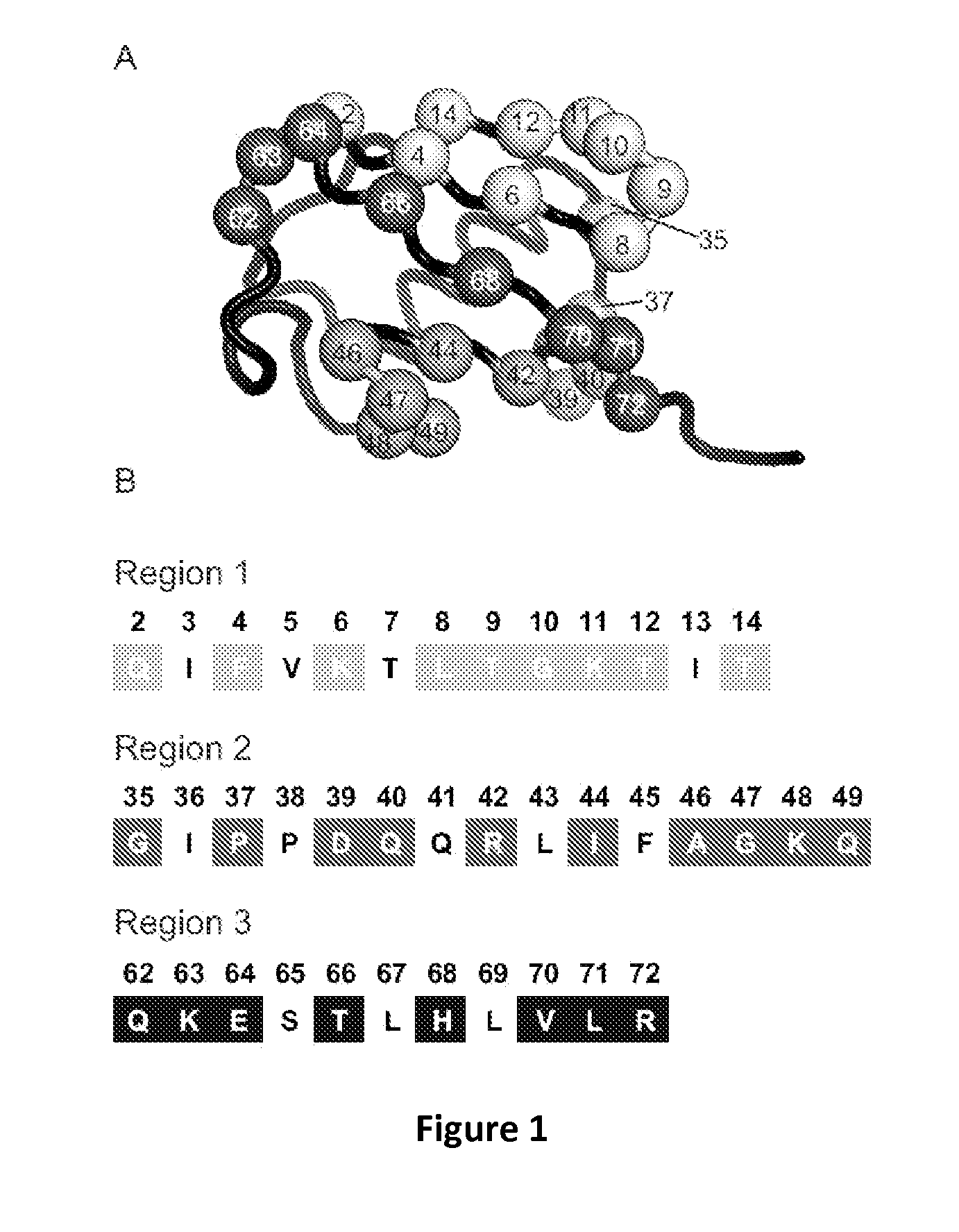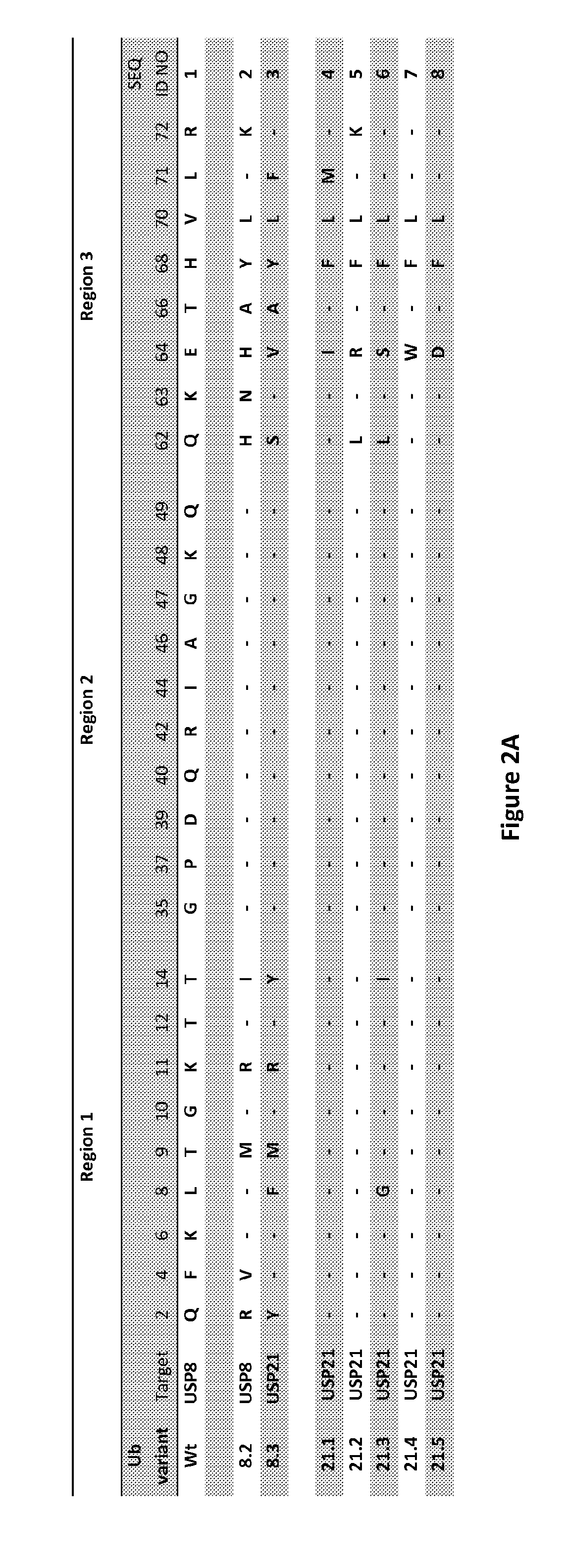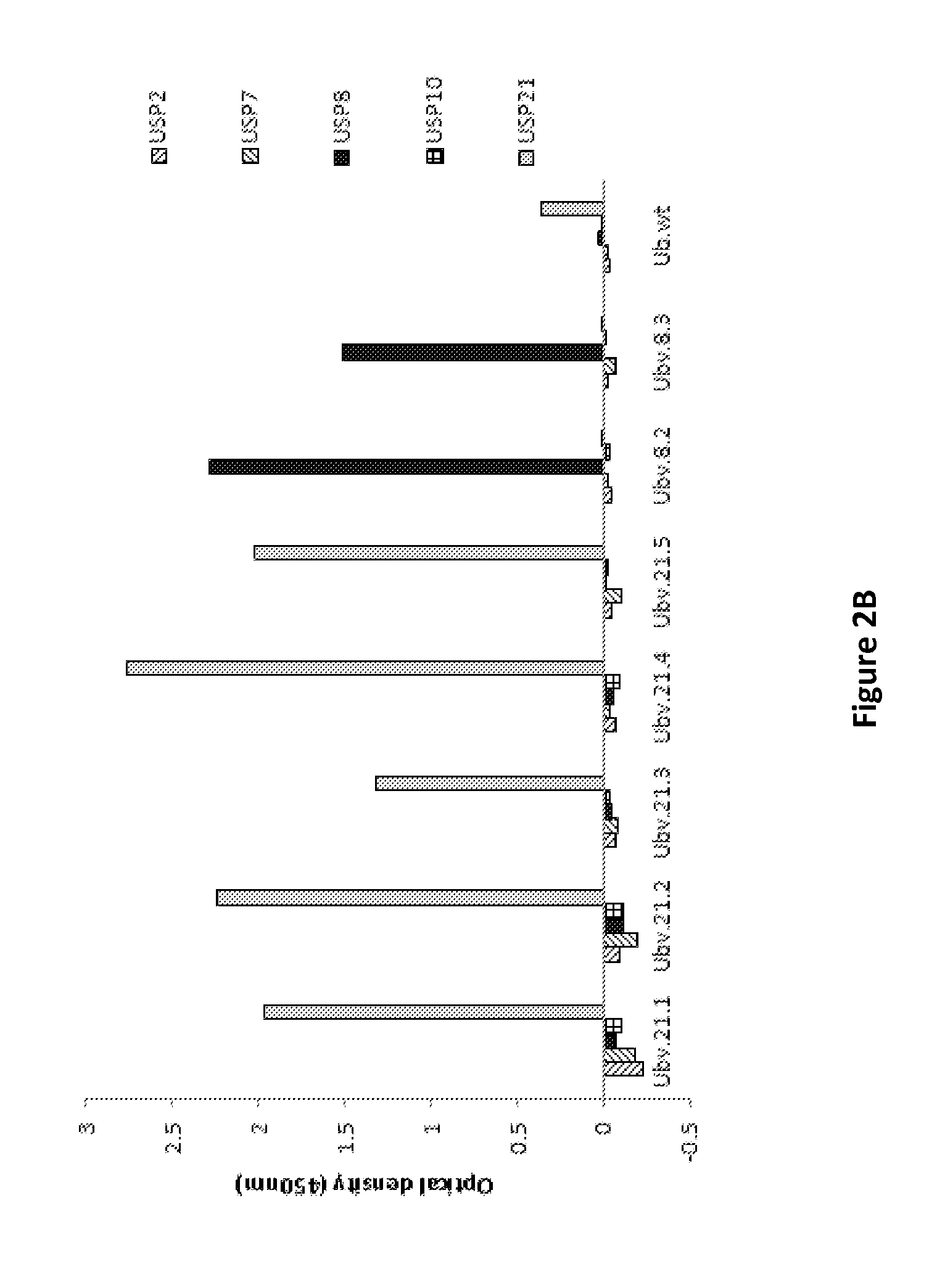Specific active site inhibitors of enzymes and methods of producing same
a technology of specific active sites and inhibitors, which is applied in the field of specific active site inhibitors of substrate binding partners, can solve the problems of insufficient structural diversity, inability to efficiently generate binding surfaces, and inability to meet the needs of ubiquitin surface generation, etc., and achieves the effect of high affinity
- Summary
- Abstract
- Description
- Claims
- Application Information
AI Technical Summary
Benefits of technology
Problems solved by technology
Method used
Image
Examples
example 1
Design, Synthesis and Testing of Ubiquitin 8 and 21 Variants
Results
[0120]Human Ub was displayed in a monovalent format on the surface of M13 bacteriophage as a fusion to the C-terminal domain of the p3 minor coat protein, using a phagemid system used previously for the display of antibodies and other proteins [Sidhu, Lowman et al. 2000; Sidhu, Li et al. 2004; Li, Xi et al. 2009]. By inspection of structures of Ub in complex with several USPs, 27 Ub residues were identified that make contact with the USP surface, and this residue set was defined as the USP-binding site. These 27 residues could be conveniently divided into three groups, with each group containing residues that are close together in the primary sequence, as follows: region 1 (residues Q2, F4, K6, L8, T9, G10, K11, T12 and T14), region 2 (residues G35, P37, D39, Q40, R42, I44, A46, G47, I48 and Q49) and region 3 (residues Q62, K63, E64, T66, H68, V70, L71 and R72) (FIG. 1). To construct a library that simultaneously tar...
example 2
[0135]Ubiquitin variants, previously selected against USP2, USP5, USP7, USP10 and USP46, had heavily altered region 2 sequences which led to misfolded nonspecifically binding clones. Accordingly, the diversity in region 2 was restricted to avoid misfolding and, therefore, the currently designed ubiquitin variant proteins comprises only 6 amino acid residues compared to the original 10 residues in region 2.
[0136]Additionally, the randomized region beyond the C-terminus of ubiquitin was extended to target directly the active site of USPs. The USP21:Ubv21.4 inhibitor structure (pdb code: 3MTN) showed that the C-terminus (residues 73 through residues 76) of ubiquitin variant 21.4 is located in the active site of the USP protein. Therefore, a ubiquitin variant was extended by two additional residues to derive an inhibitory variant which spans the active site of the USPs, which could result in optimized contacts in the active site and lead to a more efficient i...
example 3
New Target Proteins
[0138]A newly designed phage-displayed library, as set out in Example 2 above, was used in selection experiments against USP2a, USP5, USP10 and USP48. At the same time, binders against the E3-ligases Nedd4, ITCH and linear ubiquitin binding motifs (UIM) were selected. USP8 and USP21 were included as positive controls for the selection.
Binders to USP2a
[0139]USP2a acts in cooperation with USP7 / HAUSP as a positive regulator of HDM2, the major ubiquitin E3 ligase which directs p53 for proteasomal degradation (Priolo, C. 2006). Overexpression of USP2a in non-transformed cells results in an oncogenic phenotype and was shown to prevent apoptosis through chemotherapeutic drugs. Additionally, RNAi-mediated silencing of USP2a leads to an increased apoptosis of several prostate cancer cell lines, which makes USP2a a therapeutically attractive target in prostate cancer.
[0140]The catalytically active domain of USP2a (residues 251-605) was expressed, biotinylated and immobilize...
PUM
| Property | Measurement | Unit |
|---|---|---|
| concentration | aaaaa | aaaaa |
| concentration | aaaaa | aaaaa |
| concentration | aaaaa | aaaaa |
Abstract
Description
Claims
Application Information
 Login to View More
Login to View More - R&D
- Intellectual Property
- Life Sciences
- Materials
- Tech Scout
- Unparalleled Data Quality
- Higher Quality Content
- 60% Fewer Hallucinations
Browse by: Latest US Patents, China's latest patents, Technical Efficacy Thesaurus, Application Domain, Technology Topic, Popular Technical Reports.
© 2025 PatSnap. All rights reserved.Legal|Privacy policy|Modern Slavery Act Transparency Statement|Sitemap|About US| Contact US: help@patsnap.com



